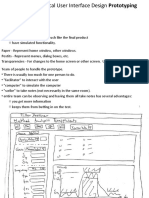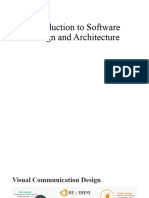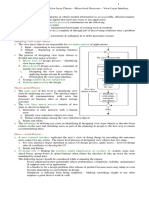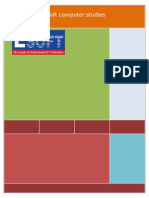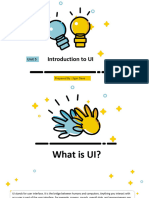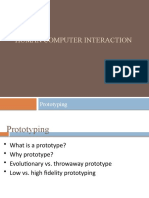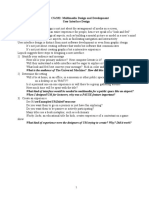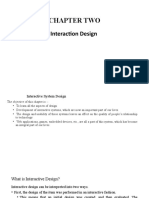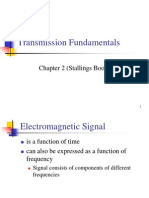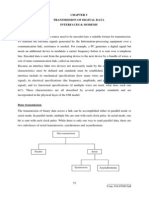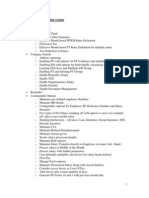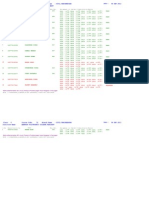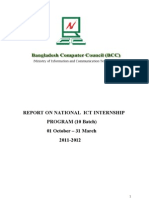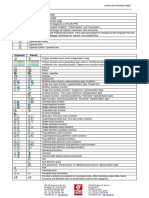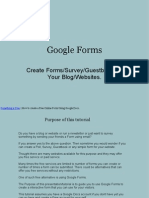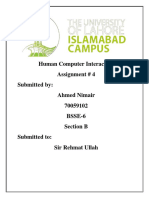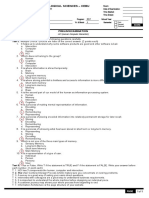User Interface CSE 403
Three Mile Island
�Chernobyl
�How do we avoid bad UI?
Learn from past mistakes Build prototypes
�Big questions
What's the point of prototyping? Should I do it?
If so, when in the overall process or "lifecycle" should I?
Should I make my prototype on paper or digitally? How do I know whether my UI is good or bad?
What are the ways in which a UI's "quality" can be quantified? What are some examples of software you use that have especially good/bad UIs? What do you think makes them good/bad?
�Usability and software design
usability: the effectiveness of users achieving tasks
Human-Computer Interaction (HCI). Usability and good UI design are closely related. A bad UI can have serious results
�Achieving usability
User testing and field studies
having users use the product and gathering data card sorting: ask users to group/design menus
Evaluations and reviews by UI experts Prototyping
Paper prototyping Code prototyping Good UI design focuses on the user
not on the developer, not on the system environment
�Prototyping
prototyping: Creating a scaled-down or incomplete version of a system to demonstrate or test its aspects. Reasons to do prototyping:
aids UI design help discover requirements help discover test cases and provide a basis for testing allows interaction with user and customer to ensure satisfaction team-building
�Some prototyping methods
1. UI builders (Visual Studio, ...)
draw a GUI visually by dragging/dropping UI controls on screen
2. implementation by hand
writing a "quick" version of your code
3. paper prototyping: a paper version of a UI
�Why do paper prototypes?
much faster to create than code can change faster than code more visual bandwidth (can see more at once) more conducive to working in teams can be done by non-technical people feels less permanent or final
�Where does paper prototyping fit?
When in the software lifecycle is it most useful to do (paper) prototyping? Requirements are the what and design is the how. Which is paper prototyping? Prototyping
helps uncover requirements and upcoming design issues during or after requirements but before design shows us what is in the UI, but also shows us details of how the user can achieve goals in the UI
�Paper prototyping usability session
user gets tasks to perform on a paper prototype
use real-world terminology, not that used by your GUI
observed by people and/or recorded a developer can "play computer"
Computer Observer(s) Facilitator
User
�Schneiderman's 8 Golden Rules
1. 2. 3. 4.
Strive for consistency. Give shortcuts to the user. Offer informative feedback. Make each interaction with the user yield a result.
5. 6. 7. 8.
Offer simple error handling. Permit easy undo of actions. Let the user be in control. Reduce short-term memory load on the user.
(from Designing the User Interface, by Ben Schneiderman of UMD, noted HCI and UI design expert)
�UI design examples
�UI design, components
When should we use:
A button? A check box? A radio button? A text field? A list? A combo box? A menu? A dialog box? Other..?
�UI Hall of Shame
http://homepage.mac.com/bradster/iarchitect/shame.htm
�Layout and color
�Bad error messages
�UI design buttons, menus
Use buttons for single independent actions that are relevant to the current screen.
Try to use button text with verb phrases such as "Save" or "Cancel", not generic: "OK", "Yes", "No" use Mnemonics or Accelerators (Ctrl-S)
Use toolbars for common actions. Use menus for infrequent actions that may be applicable to many or all screens.
Users hate menus! Try not to rely too much on menus. Provide another way to access the same functionality (toolbar, hotkey, etc.)
18
�UI design checkboxes, radio buttons
Use check boxes for independent on/off switches Use radio buttons for related choices, when only one choice can be activated at a time
�UI design lists, combo boxes
use text fields (usually with a label) when the user may type in anything they want use lists when there are many fixed choices (too many for radio buttons); all choices visible on screen at once use combo boxes when there are many fixed choices; don't take up screen real estate by showing them all at once use a slider or spinner for a numeric value
�An example UI
Good UI dialog? Did the designer choose the right components?
assume there are 20 collections and 3 ways to search
LI BSYS: Search Choose collection: Word or phrase: Search by: Adjacent words OK
Default
All
Title Yes No Cancel
�UI design multiple screens
use a tabbed pane when there are many screens that the user may want to switch between at any moment
use dialog boxes or option panes to present temporary screens or options
modal dialog box prevents any other action
�Creating a paper prototype
Gather materials
paper, pencils/pens tape, scissors highlighters, transparencies
Identify the screens in your UI
consider use cases, inputs and outputs to user
Think about how to get from one screen to next
this will help choose between tabs, dialogs, etc.
�Application backgrounds
Draw the app background (parts that matter for the prototyping) on its own
�Representing a changing UI
Place layers of UI on top of background as user clicks various options
25
�Representing interactive widgets
buttons / check boxes: tape tabs, dialog boxes: index cards text fields: removable tape combo boxes: put the choices on a separate piece of paper that pops up when they click selections: a highlighted piece of tape or transparency disabled widgets: make a gray version that can sit on top of the normal enabled version computer beeps: say "beep"
�Example paper prototype screen
�Example full paper prototype
28
�How to Watch Users
Brief the user first (being a test user is stressful)
Im testing the system, not testing you If you have trouble, its the systems fault Feel free to quit at any time Ethical issues: informed consent
Ask user to think aloud Be quiet!
Dont help, dont explain, dont point out mistakes Sit on your hands if it helps Two exceptions: prod user to think aloud (what are you thinking now?), and move on to next task when stuck
Take lots of notes
29
�Prototyping exercise
In your project groups, draw a rough prototype for a music player (e.g., WinAmp or iTunes).
Assume that the program lets you store, organize, and play songs and music videos. Draw the main player UI and whatever widgets are required to do a search for a song or video. After the prototypes are done, we'll try walking through each UI together.
Things to think about:
How many clicks are needed? What controls to use? Could your parents figure it out without guidance?
30



